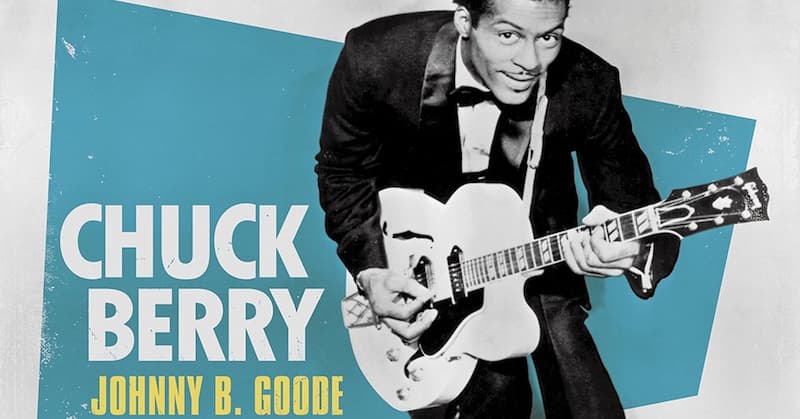
In an unforgettable chapter of rock history, John Lennon and Yoko Ono took the stage as guest hosts on The Mike Douglas Show in the United States during 1972, delivering a moment that would electrify generations. The air was charged with anticipation when Lennon proclaimed, “If you had tried to give rock’n’roll another name, you might call it ‘Chuck Berry’.” This introduction was the gateway to a spirited performance where Lennon, Ono, and their band backed the legendary Chuck Berry, culminating in an explosive rendition of “Johnny B. Goode.”
Lennon’s visible thrill during the performance echoed his lifelong affection for the song, a track he had cherished since first hearing it in 1958. It wasn’t just a favorite tune; it was a story Lennon deeply related to – a narrative of triumph where a poor boy with guitar talents rises to fame and admiration. Owning the stage with his guitar, Berry embodied the spirit and dreams of rock’s very foundation.
“Johnny B. Goode” holds a remarkable place in music lore as many believe it to be the first popular song where the singer celebrates their own success, a bold declaration that resonated powerfully in the burgeoning world of rock music. This powerful anthem attracted an extraordinary array of rock icons over the decades including the likes of Elvis Presley, Jerry Lee Lewis, Cliff Richard, The Beatles, Jimi Hendrix, The Beach Boys, Sex Pistols, Grateful Dead, and The Carpenters. These artists embraced the song not only for its electrifying energy but as a defiant statement of raw musical prowess – even if “they may not be able to read or write so well, they can play a guitar like ringing a bell!”
Released in March 1958, Johnny B. Goode arrived during Chuck Berry’s string of groundbreaking hits that defined the sound and spirit of rock ‘n’ roll. Following the success of “Sweet Little Sixteen,” which ruled the charts at number one in R&B and number two in pop, “Johnny B. Goode” nearly matched its triumph by soaring to number two on the R&B charts and number eight on the pop list.
Diverging from Berry’s earlier thematic focus on teenage life, this track carried a personal touch. It paid homage to his pianist Johnny Jenkins and echoed Berry’s own upbringing on Goode Avenue, staking his claim as rock’s first guitar hero. The song’s unforgettable, striking guitar intro was borrowed from Louis Jordan’s 1946 R&B hit “Ain’t That Just Like a Woman.” Beyond this, the song bursts with intense guitar riffs and piano rhythms, as Berry shouts wildly, “Go, Johnny, go!” urging his narrative forward—the story of a poor country boy rising from obscurity to stardom through his musical gift.
The song’s influence swiftly swept across the Atlantic, embedding itself in many British beat bands’ repertoires. Notably, The Beatles’ 1964 version immortalized on their “Live at the BBC” album stays true to Berry’s original electrifying energy. Meanwhile, Texan guitar virtuoso Johnny Winter’s 1969 version showcased flashy guitar solos but respected the structural spirit of Johnny B. Goode. Legendary guitarist Jimi Hendrix also folded his unique flame into the track, captured posthumously on the live album “Hendrix in the West.” Even country star Buck Owens put his own furious spin on the song during a live London performance, showcasing the tune’s vast cross-genre appeal.
This explosive anthem, about triumph, talent, and relentless drive, continues to ripple through rock history, inspiring old and young alike to pick up their guitars and shout, “Go Johnny go!” From humble beginnings in Louisiana to global legendary status, Johnny B. Goode remains an immortal symbol of rock and roll’s soul and spirit.